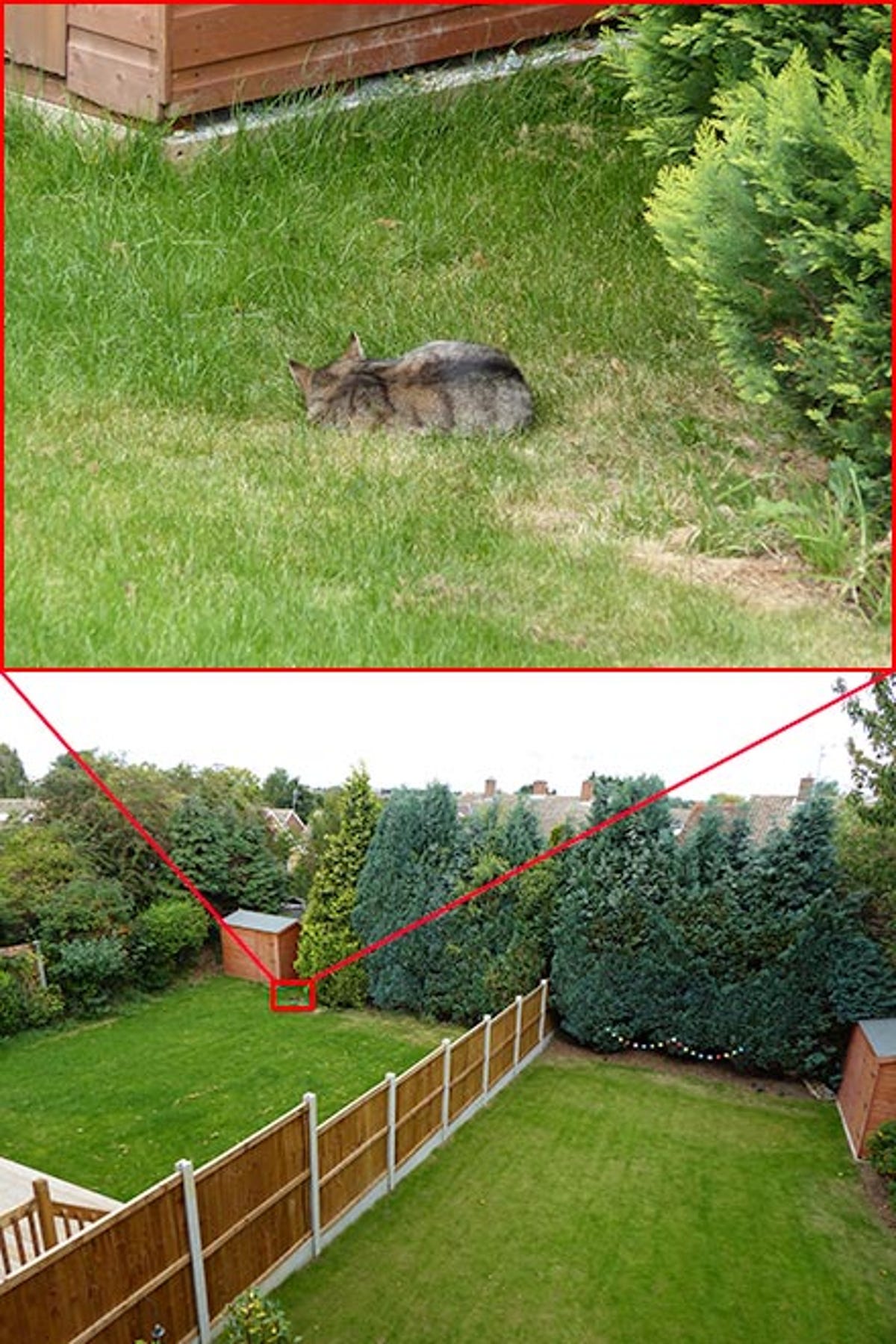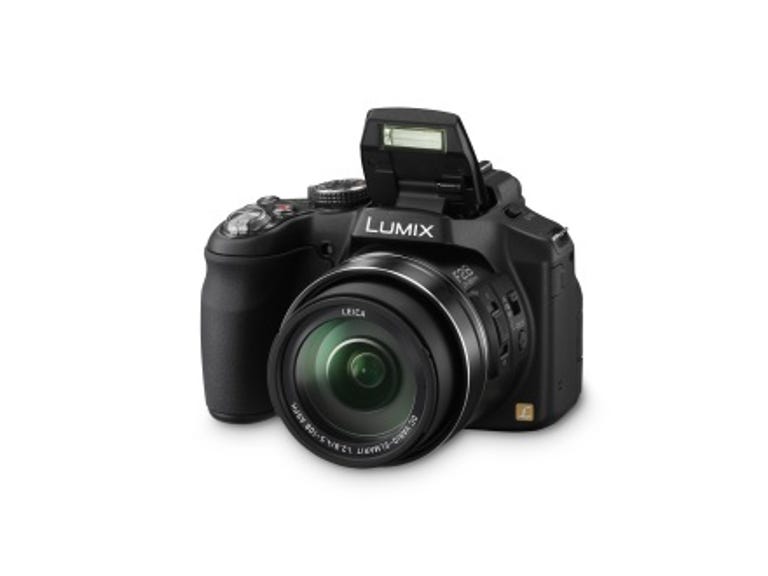 Why You Can Trust CNET
Why You Can Trust CNET Panasonic Lumix FZ200 review: Panasonic Lumix DMC-FZ200
A long zoom and a bright lens make the Panasonic Lumix DMC-FZ200 a tempting halfway-house between a compact and dSLR.
With the ability to shoot raw files plus a long zoom and a bright lens, this larger-than-average superzoom has a lot to offer.
The Good
The Bad
The Bottom Line
It's positively brimming with controls, has a sharp eyepiece viewfinder to back up the 3-inch display, and if you're an ambitious photography enthusiast, it could be well enough specced to dissuade you from upgrading to a dSLR.
You can pick up the Panasonic Lumix DMC-FZ200 from around £470 online.
Superzoom
It's not a small camera by any means, on account of the mammoth 24x zoom, which is equivalent to 25-600mm on a conventional 35mm camera. That's only half the story though. The zoom may explain the length of the body, front to back, but the width of that barrel is accounted for by the constant f/2.8 aperture throughout the range. The minimum aperture at any zoom level is f/8.
At the furthest end of the zoom, that's a pretty impressive achievement, and buying an equivalent lens for a conventional dSLR would cost several thousand pounds. You can't compare removable lenses directly with this model, but to give you some idea of what you'd pay for similar apertures or zooms when not fixed to the body, Canon's 400mm f/2.8 costs on average £7,000, while Sigma's 200-600mm f/2.8 costs in excess of £16,000.

The sensor sports a fairly conservative resolution of 12.1 megapixels. This exceeds the amount you'd need to print an A2 poster (commercial printers like Photobox recommend a 'preferred resolution' of 4 megapixels and above for printing at this size), so you can't criticise it on that front.
But with fewer pixels you have fewer options when it comes to cropping and recomposing your work in post-production. However, with a 24x zoom, that's unlikely to be an issue here. At 600mm, you could fill the frame with a house cat from 40 feet, as pictured above.
Sensitivity
By squeezing fewer pixels onto the sensor, it's usually possible to improve low-light performance, and here the FZ200 does well, although its results aren't as sharp as those achieved by either the Nikon 1 J2 or the Sony Cyber-shot RX100.
Maximum sensitivity in regular use is ISO 3,200, a level at which colours remain accurate and true to the originals, but the level of noise within the image is heightened. It's not so detrimental that fine detail is lost when zoomed out to fit, but zooming to 100 per cent reveals artefacts within my test results.
Controls and build
It's got dual zoom rockers -- one on the side of the barrel and one surrounding the shutter release -- alongside a set of very well-thought-out physical controls. There's a button beside the barrel-mounted zoom that unlocks the focus point so you can move it around the frame using the regular four-way controller.
There's a multi-function wheel above the thumb mount on the back of the body. In regular use this alternates between setting exposure compensation (+/-3EV in 1/3 stop increments), and whatever the lead metric of the selected priority mode happens to be -- so, aperture or shutter speed.
It really comes into its own in manual mode, switching between shutter and aperture setting each time you press it, while you'll trim the lens with focus set to manual. It's a slow and tedious process adjusting the focus this way, particularly at the closer end of the scale, but the display magnifies the selected focal point to help out, so it's not difficult to get a sharp result.
Minimum focusing distance at wide angle is 30cm, but you can cut this to 1cm in macro mode. It stands at 2m at the furthest end of the zoom.
The lens is very sharp and does a great job of picking out fine detail, such as the tread on the tyres and the spines in the lens of the headlights of the car below.
However, in considerably more complex scenes, there is some fudging of particularly fine detail, such as the grass below, which showed comparable levels of detail in both the in-camera JPEG and a TIFF developed from the raw file in post-production.
Shooting options
The shortest shutter speed is 1/4,000 second, and the longest sits at 60 seconds. Both of these are perfect for more demanding photography, freezing fast action at one end of the scale and allowing for longer exposures in low light without resorting to the built-in flash or an external unit on the hot shoe at the other end.
Full-frame burst mode can achieve 12 frames per second for a maximum of one second, although using auto-focus tracking, if your subject is moving towards or away from you rather than across the frame, will cut this to 5.5fps for 2 seconds. It can match the Nikon 1 J2 with a maximum burst rate of 60fps, but only at 2.5-megapixel resolution. If this is too poky, then the 5-megapixel option at 40fps might be a happy compromise.
It handles extremes of contrast incredibly well, retaining plenty of detail in shadow areas, which can be recovered in post-production -- particularly if you choose to shoot raw files. I shot raw and fine JPEGs side by side and performed my analysis with reference to the JPEGs. The camera was set to aperture priority throughout.
In the shot below, the window occupies the majority of the frame, and so is the source from which the camera metered for focus and exposure, which naturally means the surrounding shutters and walls are considerably darker. However, lifting the shadows in Adobe Lightroom reveals the existence of a radiator and further detail within the shutters.
Video test
Video performance was very good, with the FZ200 putting in an excellent performance on the audio front. The cleanly recorded soundtrack had no evidence of mechanical noise when zooming through the lens' full range during filming.
HD recording is performed at 1,920x1,080-pixel resolution, progressive or interlaced, each at 50fps. You can knock it down to a lower resolution either for sharing your movie online or to increase the frame rate for slow-speed playback. At 1,280x720 and 640x480 pixels, the sensor output increases to 100fps and 200fps respectively.
Colours were bright and contrasts were sharp throughout my video tests, and compensation for changing light levels was very smoothly handled, characterised by controlled and measured transitions as the sensor gain increased or decreased.
Conclusion
The big draw here is the FZ200's long lens and, in particular, the maximum aperture of f/2.8 at everything between 25mm and 600mm equivalent focal lengths.
The physical build has clearly been very carefully thought out, so all of the key controls are in the most logical places and fall easily to your fingers. It's no problem to quickly affect a range of common settings to cater for changing conditions.
With a conservative resolution of 12.1 megapixels, I would have liked to have seen the FZ200 perform a little better in low light, as zooming in on the results revealed some dappling. But if you're looking for a more versatile superzoom than this, you'd have a tough job finding one.


